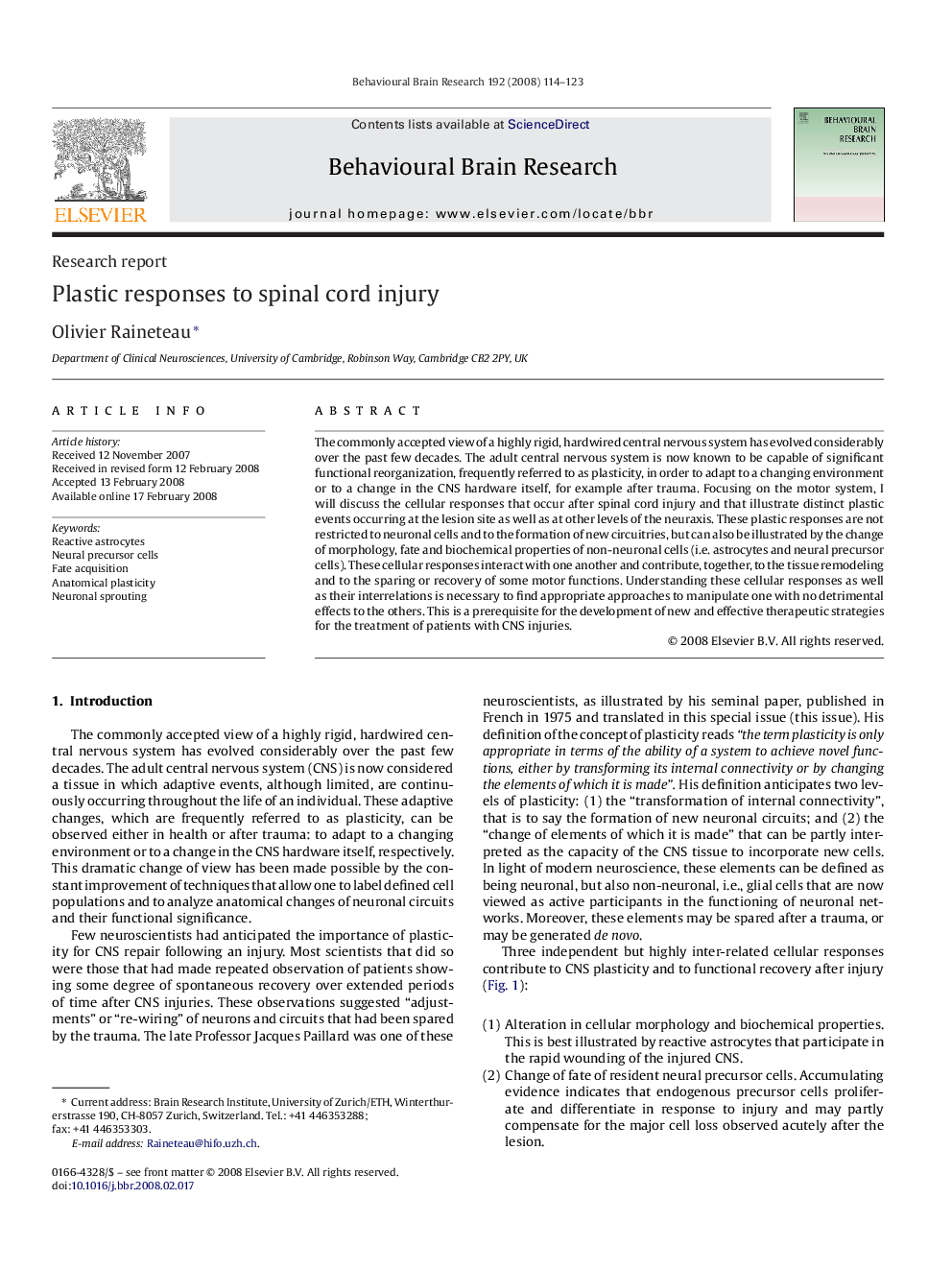| Article ID | Journal | Published Year | Pages | File Type |
|---|---|---|---|---|
| 4315217 | Behavioural Brain Research | 2008 | 10 Pages |
The commonly accepted view of a highly rigid, hardwired central nervous system has evolved considerably over the past few decades. The adult central nervous system is now known to be capable of significant functional reorganization, frequently referred to as plasticity, in order to adapt to a changing environment or to a change in the CNS hardware itself, for example after trauma. Focusing on the motor system, I will discuss the cellular responses that occur after spinal cord injury and that illustrate distinct plastic events occurring at the lesion site as well as at other levels of the neuraxis. These plastic responses are not restricted to neuronal cells and to the formation of new circuitries, but can also be illustrated by the change of morphology, fate and biochemical properties of non-neuronal cells (i.e. astrocytes and neural precursor cells). These cellular responses interact with one another and contribute, together, to the tissue remodeling and to the sparing or recovery of some motor functions. Understanding these cellular responses as well as their interrelations is necessary to find appropriate approaches to manipulate one with no detrimental effects to the others. This is a prerequisite for the development of new and effective therapeutic strategies for the treatment of patients with CNS injuries.
